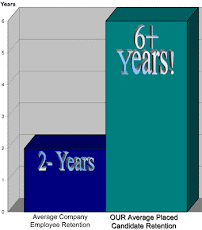Monday
12 keys to creating long-term success for your organization by putting meaningful measures on strategic activities
The most common performance measurements in organizations are traditional financial reports, yet these numbers reflect decisions made months, if not years, before. While it is important to track financials, they only keep score of how well decisions were made in the past. A pro-active leader focuses on measuring strategic items that will create positive results months and years in the future. For example, continuous development and sales of new products may be a crucial strategy of a high-tech company. An appropriate measure might be the percentage of sales generated by products developed in the last 12 months.
Effective organizations have strategic plans with specific strategies that help accomplish their missions. Those who understand the Continuous Improvement process realize that "you can't control what you don't measure," and according to CEO Neal Keefer, "you probably won't improve what you don't measure." 'This implies that successfully implementing a strategic plan requires measurable strategies with frequent reviews. Yet strategies are often broad and difficult to measure. In addition, our efforts to accomplish them may not bear fruit for several months or more. How do we put meaningful short-term measures on long-term strategic activities? Almost any strategy can have an effective measurement associated with it if the suggestions below are followed.
1. Form a strategy team to implement the strategy, determine the measure, and drive the improvement process. This team should consist of the people who are affected by the strategy, who can impact the implementation, and who have a strong desire to see the strategy implemented.
2. Keep it simple and easy to capture the data and track the results — one company wanted an indicator of employee morale, so they did a "rate my day," asking employees to rate their day from one to five on a slip of paper. Obviously you should always measure this one on the same day of the week
3. Use measures that will respond fairly quickly to actions intended to improve them — to improve sales in a new market might require activities that do not produce results for several months. Rather than tracking actual sales, you might measure the percentage of activities in the marketing plan that is on schedule.
4. Measure the desired end result (the output), rather than a step (the process) that leads to the end result. If your strategy is to take advantage of employee suggestions, measure the number of employee suggestions implemented rather than the number submitted. This guideline can conflict with number 3 above; the team will have to find an appropriate balance, possibly by using more than one measure.
5. Watch for the quality-quantity conflict — in the example in number 4 above, it would be tempting to use the dollar savings from suggestions as a more results-oriented measure, but this could deter suggestions that would have dramatic, but unquantifiable, effects on morale. Here again, the team may need more than one measure to maintain a balance.
6. Use measures that are minimally impacted by issues outside the strategy team's control. Using the employee suggestions example again, if your workforce varies seasonally, the number of suggestions implemented per employee on the payroll would be a better measure than the total number of suggestions implemented. A company that sells products to truck manufacturers, a very cyclic market, could measure sales in terms of products per one thousand trucks manufactured. This indicates their market penetration regardless of the overall level of activity in the market.
7. Support your organizational values — measuring the number of suggestions per employee might promote suggestions from individual employees, but it might not encourage people to work together to create better suggestions. If you want to promote teamwork, count only suggestions from two or more employees, or give greater weight in the measure to suggestions from teams.
8. Avoid conflict with other strategies and activities — A strategy team promoting employee training might consider measuring the number of hours spent in training each month. This, however, may conflict with the time needed to get production work done. A better measure might be the percentage of employees who have completed training in certain key competencies; this measure emphasizes the most important training without promoting excessive time in training at the expense of other activities.
9. Use measures that are not influenced by weekly, monthly, or seasonal causes. One company has a four-day workweek, Monday through Thursday, but their biggest customer has a five-day workweek, making Thursdays extra busy for the supplier. Any measure they use should average an entire week as opposed to measuring the results of one day of the week.
10. Use "positive" measures that increase, rather than decrease, with improvement. For example, measure the ratio of customer compliments to complaints, instead of just complaints. (Using a ratio of good to bad also eliminates the impact of any periodic variation in overall response rate from customers.)
11. Do not set numeric goals or objectives; instead focus on continuous improvement of the measure. Numeric objectives are rarely realistic because no one can anticipate all the obstacles or breakthroughs that a team will encounter. Goals that are too easily accomplished trivialize the importance of the team's work. Goals that are set too high demoralize them. As leader of a volunteer organization, I took responsibility for measuring the number of acknowledgments given for supporting our objectives. I never would have believed that an organization that held only two regular monthly meetings could give over 50 acknowledgments in a month, but, after a few months of tracking, this happened regularly. If a goal is truly needed, the team will set it, and will usually set it higher than any manager would. Given the necessary training, resources, information, authority, and support, teams will produce amazing results.
12. Team representatives must meet with the leadership of the organization regularly, usually monthly, to report on their measures. When positive trends occur, acknowledgment and congratulations are in order. When measures go down, attack the problem, not the person (or team). What problem-solving techniques can the team use to address the situation? Are additional training, resources, information, authority, or support needed? Is management somehow hindering progress?
The checklist below can help teams review a proposed measure against these criteria. But even well thought-out measures sometimes aren't adequate. Don't be concerned if a team's measure goes down because of some unexpected factor, or if it causes problems in other areas — remember Continuous Improvement is a journey, not a destination. Change either the measure or the system being measured, and learn from the experience.
A final suggestion — be creative! One organization has a strategy to make their workplace less stressful. My associate, Chip Phelps, had a great suggestion — regularly measure the blood pressure of the employees.
-Gabe Fasolino owns Spirited Venture
thriving leaders, thriving people, thriving enterprises
Our Promise - Reinvigorate your staff and your results in 30 days
503-919-1333
Gabe@SpiritedVenture.com
www.SpiritedVenture.com
Effective organizations have strategic plans with specific strategies that help accomplish their missions. Those who understand the Continuous Improvement process realize that "you can't control what you don't measure," and according to CEO Neal Keefer, "you probably won't improve what you don't measure." 'This implies that successfully implementing a strategic plan requires measurable strategies with frequent reviews. Yet strategies are often broad and difficult to measure. In addition, our efforts to accomplish them may not bear fruit for several months or more. How do we put meaningful short-term measures on long-term strategic activities? Almost any strategy can have an effective measurement associated with it if the suggestions below are followed.
1. Form a strategy team to implement the strategy, determine the measure, and drive the improvement process. This team should consist of the people who are affected by the strategy, who can impact the implementation, and who have a strong desire to see the strategy implemented.
2. Keep it simple and easy to capture the data and track the results — one company wanted an indicator of employee morale, so they did a "rate my day," asking employees to rate their day from one to five on a slip of paper. Obviously you should always measure this one on the same day of the week
3. Use measures that will respond fairly quickly to actions intended to improve them — to improve sales in a new market might require activities that do not produce results for several months. Rather than tracking actual sales, you might measure the percentage of activities in the marketing plan that is on schedule.
4. Measure the desired end result (the output), rather than a step (the process) that leads to the end result. If your strategy is to take advantage of employee suggestions, measure the number of employee suggestions implemented rather than the number submitted. This guideline can conflict with number 3 above; the team will have to find an appropriate balance, possibly by using more than one measure.
5. Watch for the quality-quantity conflict — in the example in number 4 above, it would be tempting to use the dollar savings from suggestions as a more results-oriented measure, but this could deter suggestions that would have dramatic, but unquantifiable, effects on morale. Here again, the team may need more than one measure to maintain a balance.
6. Use measures that are minimally impacted by issues outside the strategy team's control. Using the employee suggestions example again, if your workforce varies seasonally, the number of suggestions implemented per employee on the payroll would be a better measure than the total number of suggestions implemented. A company that sells products to truck manufacturers, a very cyclic market, could measure sales in terms of products per one thousand trucks manufactured. This indicates their market penetration regardless of the overall level of activity in the market.
7. Support your organizational values — measuring the number of suggestions per employee might promote suggestions from individual employees, but it might not encourage people to work together to create better suggestions. If you want to promote teamwork, count only suggestions from two or more employees, or give greater weight in the measure to suggestions from teams.
8. Avoid conflict with other strategies and activities — A strategy team promoting employee training might consider measuring the number of hours spent in training each month. This, however, may conflict with the time needed to get production work done. A better measure might be the percentage of employees who have completed training in certain key competencies; this measure emphasizes the most important training without promoting excessive time in training at the expense of other activities.
9. Use measures that are not influenced by weekly, monthly, or seasonal causes. One company has a four-day workweek, Monday through Thursday, but their biggest customer has a five-day workweek, making Thursdays extra busy for the supplier. Any measure they use should average an entire week as opposed to measuring the results of one day of the week.
10. Use "positive" measures that increase, rather than decrease, with improvement. For example, measure the ratio of customer compliments to complaints, instead of just complaints. (Using a ratio of good to bad also eliminates the impact of any periodic variation in overall response rate from customers.)
11. Do not set numeric goals or objectives; instead focus on continuous improvement of the measure. Numeric objectives are rarely realistic because no one can anticipate all the obstacles or breakthroughs that a team will encounter. Goals that are too easily accomplished trivialize the importance of the team's work. Goals that are set too high demoralize them. As leader of a volunteer organization, I took responsibility for measuring the number of acknowledgments given for supporting our objectives. I never would have believed that an organization that held only two regular monthly meetings could give over 50 acknowledgments in a month, but, after a few months of tracking, this happened regularly. If a goal is truly needed, the team will set it, and will usually set it higher than any manager would. Given the necessary training, resources, information, authority, and support, teams will produce amazing results.
12. Team representatives must meet with the leadership of the organization regularly, usually monthly, to report on their measures. When positive trends occur, acknowledgment and congratulations are in order. When measures go down, attack the problem, not the person (or team). What problem-solving techniques can the team use to address the situation? Are additional training, resources, information, authority, or support needed? Is management somehow hindering progress?
The checklist below can help teams review a proposed measure against these criteria. But even well thought-out measures sometimes aren't adequate. Don't be concerned if a team's measure goes down because of some unexpected factor, or if it causes problems in other areas — remember Continuous Improvement is a journey, not a destination. Change either the measure or the system being measured, and learn from the experience.
A final suggestion — be creative! One organization has a strategy to make their workplace less stressful. My associate, Chip Phelps, had a great suggestion — regularly measure the blood pressure of the employees.
-Gabe Fasolino owns Spirited Venture
thriving leaders, thriving people, thriving enterprises
Our Promise - Reinvigorate your staff and your results in 30 days
503-919-1333
Gabe@SpiritedVenture.com
www.SpiritedVenture.com
Subscribe to:
Post Comments (Atom)














No comments:
Post a Comment